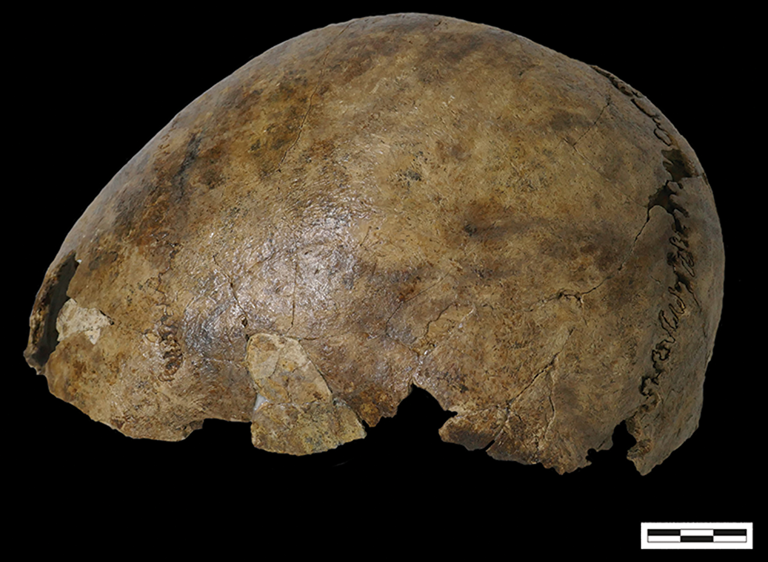
The best of Voices delivered to your inbox every week - from controversial columns to expert analysis
Sign up for our free weekly Voices newsletter for expert opinion and columns
Sign up to our free weekly Voices newsletter
Archaeologists have unravelled the mystery of a strange skeleton from Belgium consisting of bones from five people who lived 2,500 years apart.
The skeleton, unearthed in the 1970s at a Roman cemetery, was laid to rest in a fetal position.
The bones were initially thought to be from the second or third century AD even though the arrangement of the body in a fetal position was atypical for the Roman period.
A Roman bone pin near the skull led archaeologists to interpret the remains as belonging to a woman who lived between 69 and 210 AD during the Gallo-Roman era.
But radiocarbon dating of the intact skeleton in 2019 revealed that while parts of it were of Roman origin, there were bones from the late Stone Age as well.

Archaeologists routinely find manipulated human bodies, but the assembling of bones from different people is much rarer.
“Rarer still are composite individuals with skeletal elements separated by hundreds or even thousands of years,” they note.
But how did such a mix of bones come together into a single skeleton?
Researchers suspect the Stone Age burial was disturbed by accident and the Romans reworked it 2500 years later by adding a new skull and grave goods such as the bone pin to cover it up.
“Disturbance of the burial may have necessitated reparations through the completion or construction of an individual with agency in the afterlife,” they write.
“A second possibility is that the entire ‘individual’ was assembled during the Gallo-Roman period, combining locally sourced Neolithic bones with a Roman-period cranium.”

The Romans, likely “inspired by superstition”, may have intentionally assembled the composite skeleton “to connect with an individual who had occupied the area before themselves,” scientists say.
“Either there was originally no cranium and the Roman community that discovered the burial added one to complete the ‘individual’, or they replaced the existing Neolithic-date cranium with a Roman-period one.”
Fantastic find: a composite burial consisting of several Neolithic persons with a Gallo-Roman head that even had close family in a cemetery 150 km away. All well dated end sequenced.
Congratulation @VeselkaBarbara & team. https://t.co/GJ6SHuvw3R
Though the motivation remains obscure, researchers conclude that “the presence of the ‘individual’ was clearly intentional”.
“The bones were selected, a fitting location chosen and the elements arranged carefully to mimic the correct anatomical order,” they write.
“The resulting burial implies great care and planning, as well as a good knowledge of human anatomy.”

 By The Independent (Science) | Created at 2024-11-06 05:43:03 | Updated at 2024-11-06 08:55:19
4 hours ago
By The Independent (Science) | Created at 2024-11-06 05:43:03 | Updated at 2024-11-06 08:55:19
4 hours ago






